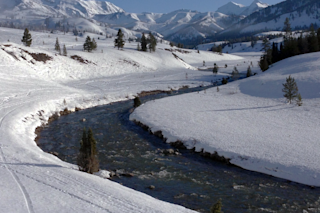In 2014, Greg Fiske, a geographer at the Woodwell Climate Research Center, was in Siberia during an unusually hot period — about 90 degrees Fahrenheit — when a strange news story came out. Pilots had flown over the Yamal Peninsula and reported a huge hole in the ground that seemed to have appeared out of nowhere, in the same region that Fiske and his colleague, Sue Natali, were working. “Siberia is a big place, but we were not far away,” he says. “It was kind of odd to experience that.”
Since then, researchers have identified more of these craters across two regions, the Yamal and Gyda peninsulas. They're part of the Siberian tundra, a massive stretch of land in Russia characterized by a layer of permanently frozen soil just below the surface. And, as scientists have found, the holes, which are roughly 65 feet across when first formed, don’t show ...














